Milford Sound Takes You Straight To Natures Lap
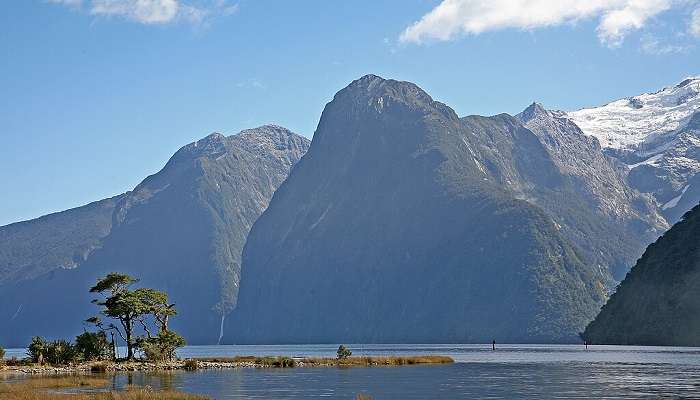
Nestled in the spectacular landscape of Fiordland National Park on New Zealand’s South Island, Milford Sound is a testament to this place’s majesty and untouched beauty. Carved by glaciers from the last ice age, the iconic fjord stretches for more than 15 kilometres in the Tasman Sea and is surrounded by towering cliffs, cascading waterfalls, and a serene mirror-like reflection in the water. Milford Sound (known as Piopiotahi) has a rich history for centuries and attracts visitors with its beautiful scenery and abundant wildlife. Each corner of this natural wonderland invites exploration and promises moments of profound serenity amidst nature’s timeless beauty.
Exploring Milford Sounds Natural Beauty
Located in New Zealand’s Fiordland National Park, Milford Sound attracts the attention of adventurers with its high cliffs, cascading waterfalls, and calm fjords. From sacred stories of the Maori people to beautiful landscapes that have fascinated visitors for centuries, it will take you on an extraordinary journey into the heart of nature.
1. A Glimpse Into The History Of Milford Sound

The history of Milford Sound is steeped in Maori legend and tales of exploration. For centuries, the Indigenous Maori people revered it as a sacred place, believing it to be the handiwork of a divine entity. According to Maori legend, the towering peaks of Milford Sound were formed when a mighty demigod, Tute Rakiwhanoa, cleaved the land with his adze, leaving behind the deep valleys and towering cliffs that define the fjord today.
The first European to discover Milford Sound was Captain John Grono in 1812, though it was later named after Welsh sailor John Milford, who charted the area in 1819. Throughout the 19th century, it remained relatively isolated and inaccessible, known only to a few intrepid explorers and seal hunters. However, its remote beauty soon captured the imaginations of artists, writers, and adventurers, drawing visitors worldwide to witness its majestic landscapes firsthand.
What To Do: Kayaking
Best Time To Visit: Spring (September-November)
Must Read: New Zealand In Summer
2. Why Milford Sound Is So Famous
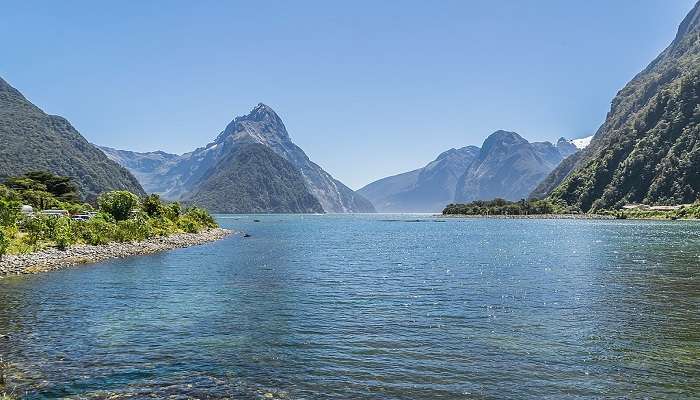
Milford Sound’s fame stems from its unparalleled natural beauty and dramatic landscapes, which have earned it recognition as one of the world’s top travel destinations. Renowned for its towering Mitre Peak, which rises over a kilometre from the water’s edge, it boasts some of the highest sea cliffs in the world, creating a breathtaking backdrop for hiking, cruising, kayaking, and photography.
One of the fjord’s most iconic features is its abundance of waterfalls, including the majestic Stirling Falls and Bowen Falls, which cascade from sheer granite cliffs into the still waters below. These cascades, fed by the region’s abundant rainfall, create a spectacle of mist and rainbows that adds to Milford Sound’s mystical allure.
What To Do: Milford Track or the Key Summit Track
Best Time To Visit: Spring (September-November)
3. Why You Should Visit
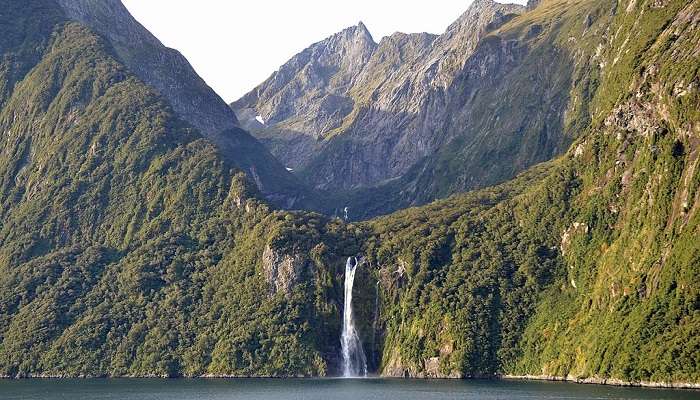
For those seeking an immersive wilderness experience, Milford Sound provides ample opportunities for hiking and exploration. The Milford Track, one of New Zealand’s Great Walks, offers a multi-day trek through some of the country’s most spectacular landscapes, culminating in a boat cruise through the heart of the fjord. Alternatively, Milford sound hikes along the Milford Foreshore or to viewpoints such as the iconic Key Summit, which offers panoramic views of the surrounding peaks. If you are not in the mood to go for a trek, you can always take a walk into nature’s lap and relax. After all, vacations are meant to be spent the way you want.
What To Do: Bird eye view of Mitre Peak and the Sutherland Falls
Best Time To Visit: Spring (September-November)
Suggested Read: Places For Photography In New Zealand
4. Accommodation In Milford Sound
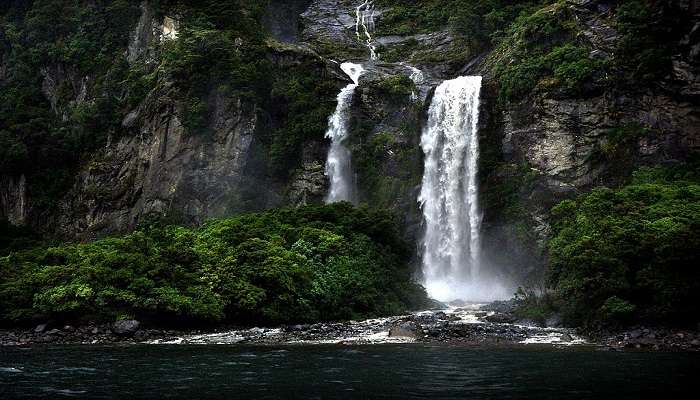
When considering where to stay in Milford Sound, travellers will find limited options due to its location within a national park and UNESCO World Heritage Site. The primary accommodation provider is the Milford Sound Lodge, offering a variety of lodging choices to cater to different budgets and preferences. Nestled beneath the majestic Darran Mountains, the lodge provides a picturesque setting and serves as an ideal base for exploring the surrounding Fiordland National Park/Te Wahipounamu – South West New Zealand World Heritage Area.
For those seeking a unique overnight experience while searching Milford Sound places to stay, another option is to stay onboard an overnight cruise on Milford Sound itself. These cruises offer the opportunity to immerse oneself in the tranquillity of the fiord while enjoying the comforts of onboard accommodation. Additionally, travellers considering where to stay in Milford Sound Track must book accommodation in the huts along the route, ensuring a restful night’s sleep amidst the stunning landscapes of Fiordland National Park. While accommodation options while probing places to stay may be limited, nearby towns such as Queenstown and Te Anau offer a wider range of choices, making them popular starting points for day tours to Milford Sound.
What To Do: Wildlife spotting
Best Time To Visit: Spring (September-November)
5. Ideal Times To Visit
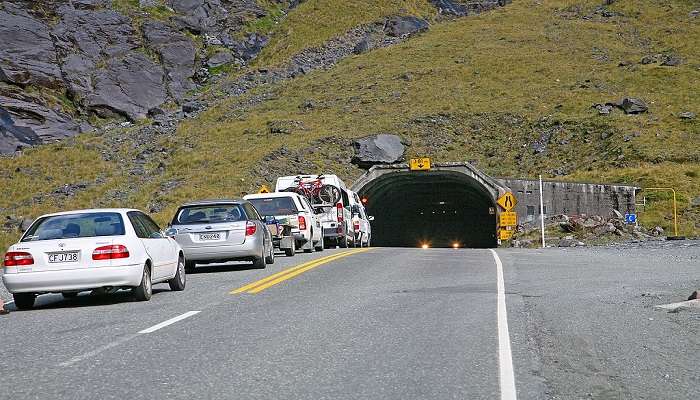
During the summer months from December to February, Milford Sound enjoys its warmest and driest weather, with average temperatures ranging from 10°C to 20°C (50°F to 68°F). These months are considered the peak tourist season, attracting visitors with clear skies, lush greenery, and ample opportunities for outdoor activities such as hiking, kayaking, and scenic cruises. However, it is essential to be prepared for sudden changes in weather, as rain showers are still common even during the summer.
In contrast, the winter months from June to August bring cooler temperatures and increased rainfall to Milford Sound. Average temperatures during this time range from 5°C to 10°C (41°F to 50°F), with occasional snowfall occurring at higher elevations. While winter may not be the most popular time to visit due to the colder and wetter conditions, it offers a unique opportunity to witness the fiord shrouded in mist and dramatic cloud formations, creating an atmospheric and ethereal ambience. Spring (September to November) and autumn (March to May) balance the extremes of summer and winter, with milder temperatures and fewer crowds. These transitional seasons are ideal for exploring Milford Sound’s natural beauty while enjoying more moderate weather conditions.
What To Do: Views of towering peaks, cascading waterfalls, and marine wildlife
Best Time To Visit: Spring (September-November)
Further Read: Famous Landmarks In New Zealand
Hope you enjoyed reading this Milford Sound travel guide. Yet, the words may not do justice to the splendour of this destination. It is a place that needs to be seen and experienced, deserving all your attention. Book a trip to New Zealand and make lasting memories with your loved ones.
For our editorial codes of conduct and copyright disclaimer, please click here.
Cover Image Source: W. Bulach for wikimedia commons
Frequently Asked Questions About Milford Sound
Why is Milford Sound so famous?
Milford Sound is famous for its natural beauty, with soaring peaks, cascading waterfalls, and tranquil fjords. Its beautiful scenery, which includes landmarks such as Miter Peak and Stirling Falls, has earned it a reputation as one of the world's top tourist attractions.
Was Lord of the Rings filmed in Milford Sound?
Yes, parts of the Lord of the Rings film trilogy were filmed in Milford Sound. Its landscape became the backdrop for scenes depicting the fictional world of Middle-earth, presenting the beautiful land to an international audience.
Why is Milford Sound called a sound?
Despite its name, Milford Sound is technically a fjord and not a sound. The term 'fjord' generally refers to a body of water formed by a river valley below rising sea levels. The formation of Milford Sound is mainly due to glacial erosion during the last ice age.
How do I get to Milford Sound?
Milford Sound can be accessed by road via the Milford Road from Te Anau or Queenstown. Alternatively, visitors can opt for flights or cruises departing from Queenstown or Te Anau to reach Milford Sound from the air or water.
Are there accommodations available in Milford Sound?
Yes, there are accommodations available in Milford Sound, primarily provided by Milford Sound Lodge. Visitors can choose from a range of options, including luxury chalets, campervan sites, or overnight cruises.
People Also Read:
Best Cities to Visit in New Zealand Churches In Wellington Paragliding In New Zealand

We all have to begin somewhere. This is where I start and I hope that my writings encourage you to begin. To new beginnings and conquering new places!











